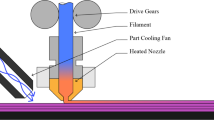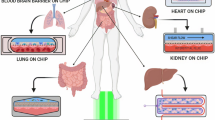Abstract
Published reports on studies in clinostats and random positioning machines frequently do not include adequate operational data on physical parameters of the culture device or cell culture conditions. This failure to report minimum physical and chemical data on how experiments are performed makes it impossible to determine specific hardware utilization or to calculate forces delivered. This makes experimental comparisons difficult and isolation of critical methodological differences between investigational results impossible. A minimum set of parameters to be reported in clinostat or random positioning machines is proposed to be known as the Bonn criteria. For random positioning machine experiments, the minimum experimental parameters to be reported should include angular velocity of rotation, highest angular acceleration, operating mode (random, centrifuge, or clinostat in rpm or freely programmable mode). For both clinostat and random positioning machines, experimental reporting should include the properties of the culture vessel, culture media and carrier beads. These should also include dimensions and rotation speed of vessel, chemical consistency including density and viscosity of media, size, density, and porosity of beads, size, density, and porosity of cells, whether cells are motile or non-motile, density of beads with cells attached, as well as time of rotation, nature of controls, operating temperature, and gas content.
Similar content being viewed by others
References
Andereck, C.D., Liu, S.S., Swinney, H.L.: Flow regimes in a circular Couette system with independently rotating cylinders. J. Fluid Mech. 164, 155–183 (1986)
Benoit, M., Klaus, D.: Can genetically modified Escherichia coli with neutral buoyancy induced by gas vesicles be used as an alternative method to clinorotation for microgravity studies? Microbiology 151, 69–74 (2005)
Birch, J.R., Arathoon, R.: Suspension culture of mammalian cells. Bioprocess Technol. 10, 251–270 (1990)
Borst, A.W., van Loon, J.J.W.A.: Technology and developments for the random positioning machine, RPM. Microgravity Sci. Technol. (2008). doi:10.1007/s12217-008-9043-2
Brazma, A., Hingamp, P., Quackenbush, J., Sherlock, G., Spellman, P., Stoeckert, C., Aach, J., Ansorge, W., Ball, C.A., Causton, H.C., Gaasterland, T., Glenisson, P., Holstege, F.C.P., Kim, I.F., Markowitz, V., Matese, J.C., Parkinson, H., Robinson, A., Sarkans, U., Schulze-Kremer, S., Stewart, J., Taylor, R., Vilo, J., Vingron, M.: Minimum information about a microarray experiment (MIAME)—toward standards for microarray data. Nat. Genet. 29, 365–371 (2001)
Briegleb, W.: The clinostat—a tool for analyzing the influence of acceleration in solid–liquid systems. In: Proceedings Workshop on Space Biology, SP-206, pp. 97–101. European Space Agency, Cologne, Germany (1983)
Cowger, N.L., Benes, E., Allen, P.L., Hammond, T.G.: Expression of renal cell protein markers is dependent on initial mechanical culture conditions. J. Appl. Physiol. 92(2), 691–700 (2002)
Gao, H., Ayyaswamy, P.S., Ducheyne, P.: Dynamics of a microcarrier particle in the simulated microgravity environment of a rotating wall vessel. Microgravity Sci. Technol. X, 154–165 (1997)
Goodwin, T.J., Prewett, T.L., Wolf, D.A., Spaulding, G.F.: Reduced shear stress: a major component in the ability of mammalian tissues to form three-dimensional assemblies in simulated microgravity. J. Cell Biochem. 51, 301–311 (1993)
Hammond, T.G., Hammond, J.M.: Optimized suspension culture—the rotating wall vessel. Am. J. Physiol. Renal. 281(1), 12–25 (2001)
Helmrich, A., Barnes, D.: Animal cell culture equipment and techniques. Methods Cell Biol. 57, 3–17 (1998)
Jessup, J.M., Brown, D., Fitzgerald, W., Ford, R.D., Nachman, A., Goodwin, T.J., Spaulding, G.: Induction of carcinoembryonic antigen expression in a three-dimensional culture system. In Vitro Cell Dev. Biol. Anim. 33, 352–357 (1997)
Kaysen, J.H., Campbell, W.C., Majewski, R.R., Goda, F.O., Navar, G.L., Lewis, F.C., Goodwin, T.J., Hammond, T.G.: Select de novo gene and protein expression during renal epithelial cell culture in rotating wall vessels is shear stress dependent. J. Membr. Biol. 168, 77–89 (1999)
Klaus, D.M., Todd, P., Schatz, A.: Functional weightlessness during clinorotation of cell suspensions. Adv. Space Res. 21, 1315–1318 (1998)
Klaus, D.M., Benoit, M.R., Nelson, E.S., Hammond, T.G.: Extracellular mass transport considerations for space flight research concerning suspended and adherent in vitro cell cultures. J. Gravit. Physiol. 11(1), 17–27 (2004)
Schwarz, R.P., Wolf, D.A.: (Inventors). Rotating Bio-reactor Cell Culture Apparatus. US patent 4988623. 29 Jan (1991)
Spaulding, G.F., Jessup, J.M., Goodwin, T.J.: Advances in cellular construction. J. Cell Biochem. 51, 249–251 (1993)
Tsao, Y.D., Boyd, E., Wolf, D.A., Spaulding, G.F.: Fluid dynamics within a rotating bioreactor in space and earth environments. J. Spacecr. Rockets 31, 937–943 (1994)
Unsworth, B.R., Lelkes, P.I.: Growing tissues in microgravity. Nat. Med. 4, 901–907 (1998)
van Loon, J.J.W.S.: Some history and use of the random positioning machine, RPM, in gravity related research. Adv. Space Res. 39, 1161–1165 (2007)
Wolf, D.A., Schwartz, R.P.: Analysis of Gravity-Induced Particle Motion and Fluid Perfusion Flow in the NASA-Designed Rotating Zero-Head-Space Tissue Culture Vessel. Washington, DC: NASA Tech. Paper 3143 (1991)
Wolf, D.A., Schwartz, R.P.: Experimental Measurement of the Orbital Paths of Particles Sedimenting Within a Rotating Viscous Fluid as Influenced by Gravity. Washington, DC: NASA Tech. Paper 3200 (1992)
Zhau, H.E., Goodwin, T.J., Chang, S.M., Baker, T.L., Chung, L.W.: Establishment of a three-dimensional human prostate organoid coculture under microgravity-simulated conditions: evaluation of androgen-induced growth and PSA expression. In Vitro Cell Dev. Biol. Anim. 33, 375–380 (1997)
Author information
Authors and Affiliations
Corresponding author
Rights and permissions
About this article
Cite this article
Hammond, T., Allen, P. The Bonn Criteria: Minimal Experimental Parameter Reporting for Clinostat and Random Positioning Machine Experiments with Cells and Tissues. Microgravity Sci. Technol. 23, 271–275 (2011). https://doi.org/10.1007/s12217-010-9226-5
Received:
Accepted:
Published:
Issue Date:
DOI: https://doi.org/10.1007/s12217-010-9226-5




